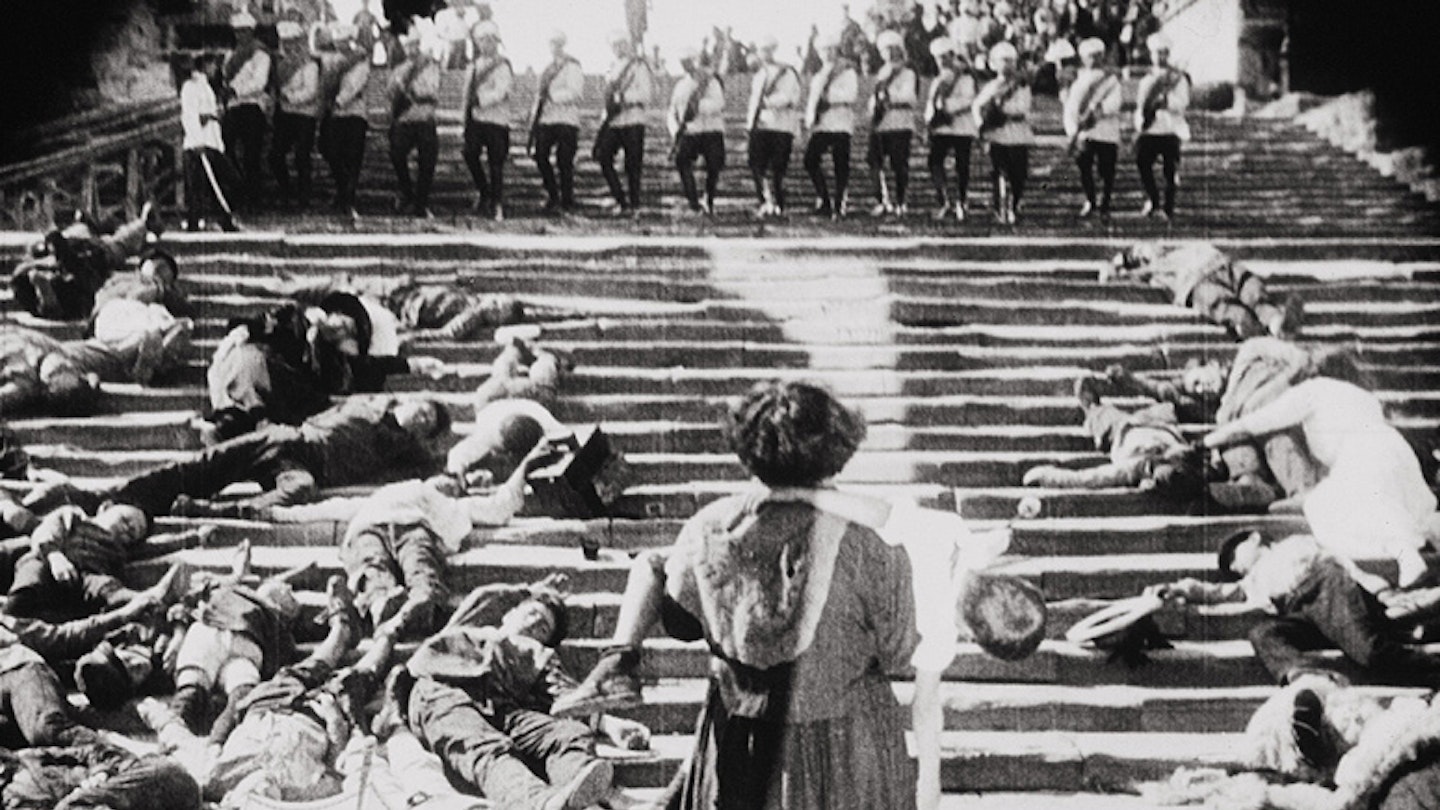Key filmmakers: Sergei Eisenstein, Lev Kuleshov
Key dates: 1924-1935
What is it? Even if you’ve never seen a 1920s Russian film (what have you been doing with your life?), you’ll still have noticed one of the most recognisable editing techniques in film history: the montage. It all kicked off when Russian director-cum-theorist Lev Kuleshov realised that an actor’s expression wasn’t enough to convey a specific idea, therefore juxtaposed images must. Cue the so-called ‘Kuleshov Effect’. The director intercut shots of faces with related images to generate an emotional response in his spectators.
It was a new style of editing that spurned capitalism by going against the smooth, romantic editing prolific at the time and generally stirred up the creative juices of directors everywhere. Sergei Eisenstein’s work (Battleship Potemkin, most famously) was inspired by Kuleshov and refused to spoonfeed audiences, cutting between random imagery to make viewers decipher an idea or feeling. This jarring style was also used as a medium through which to ‘educate’ the working classes. As such his films rarely focused on one protagonist alone. The hero here was ‘the people’ and many of the film’s leading characters weren’t given names in an aim to unify the main players.
This technique changed the way film integrated time and space and evolved into the ‘montage’ we know today and that is seen so much throughout cinema history. Citizen Kane, Rocky, Scarface and Commando all use montages, if in a slightly less intensive form than its Russian creators intended.
What to watch: Strike (1924), Battleship Potemkin (1925) (pictured top), October (Ten Days That Shook The World) (1927), The Man With The Movie Camera (1929)
What did it influence? Eisenstein has been homaged relentless, most memorably by Brian De Palma in The Untouchables’ Union Station scene, while virtually every montage in cinema bears the influence of this Soviet movement to a greater or lesser extent. Well, maybe not this one.
Trivia: Sergei Eisenstein used haiku to teach his montage techniques to students.
What To Say: “Now why should the cinema follow the forms of theater and painting rather than the methodology of language, which allows wholly new concepts of ideas to arise from the combination of two concrete denotations of two concrete objects?” (Sergei Eisenstein)
What Not to Say: “You sunk my battleship Potemkin!”
